If you've heard of sustainable gardening, you may be wondering what it is, why it's such a hot topic at the moment, and whether it's worth knowing. There's a good reason to start sustainable gardening, and it's really quite simple to do once you know the basics. Sustainable gardening techniques are important to provide nutritious, safe food for you and your family without harming the environment.
Sustainable Gardening Definition: While growing plants for food and aesthetics, do as little harm as possible to the land, water, and air. This includes conserving water, reducing chemical use, and maintaining healthy soil. The goal is to practice gardening methods that meet our present needs without compromising future generations' ability to garden and grow their own food.
Jump to:
- Why Is Sustainable Garden Necessary?
- Can A Vegetable Garden Really Be Sustainable?
- Seven Easy Ways To Start Sustainable Gardening Practices
- 1.Eliminate Chemical Use
- 2.Start A Compost Pile
- 3.Conserve Water
- 4.Plant Native
- 5.Stop Tilling
- 6.Reuse & Repurpose
- 7.Mulch
- Sustainable Gardening Practices and Why They're Important
Why Is Sustainable Garden Necessary?
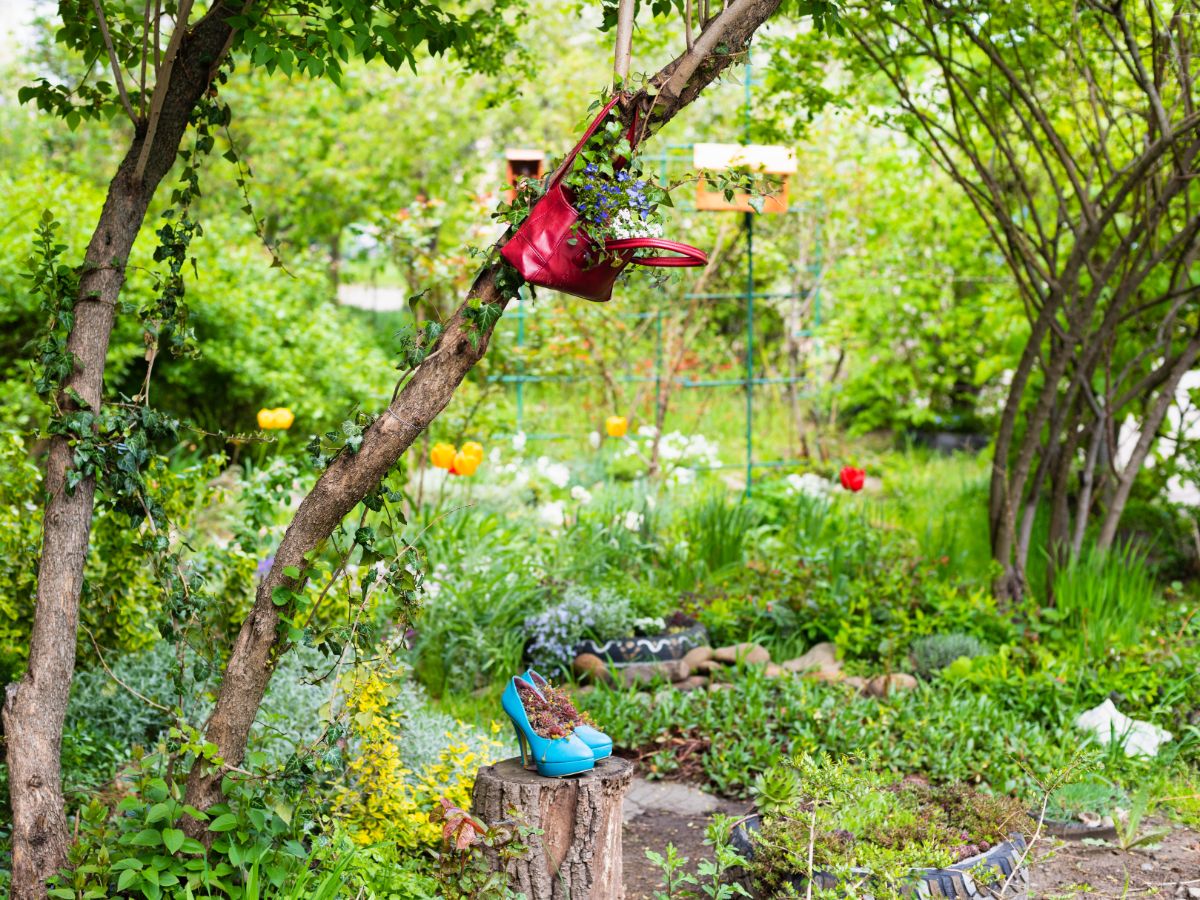
Modern gardening and farming practices strip resources from the land, like soil nutrients and water, without making efforts to renew or refresh the landscape. These methods are detrimental to the earth and limit the usability of the land in years to come.
Sustainable gardening focuses on using natural resources efficiently to limit the depletion of these assets while also employing processes that restore the land. Instead of forcing the ground to produce what we need and want, sustainable gardeners work with nature to find the best ways to grow what is needed.
Sustainable gardening is essential because the earth does not have unlimited resources. Water supplies are finite, and the soil gets depleted to the point of being unable to grow anything when over-worked.
Can A Vegetable Garden Really Be Sustainable?
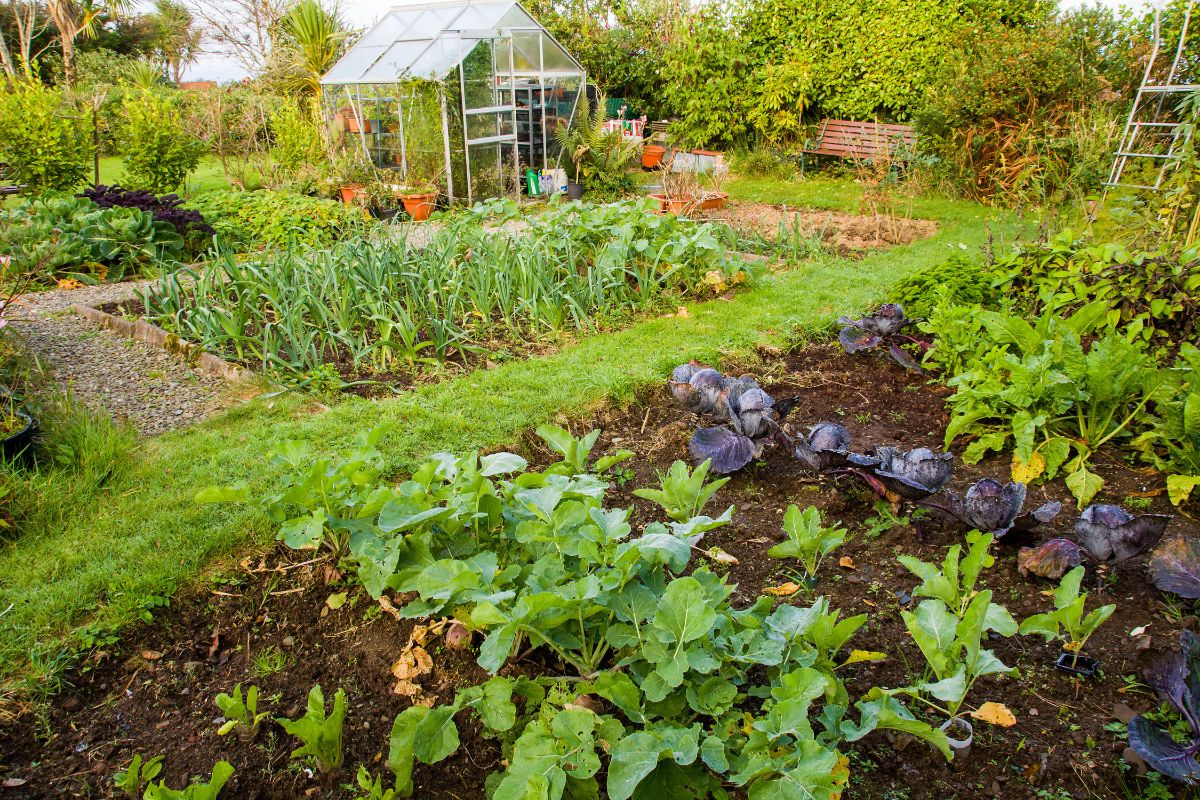
Absolutely! It likely will require some reconsideration of a garden's purpose and lead to changing practices, but it is entirely possible. And, not super complicated, either. While many of the methods sound daunting, it's simply because they're new to you. It's not difficult, just different.
For those that have been gardening for a long time and learned those skills from parents and grandparents, it's time to reassess the process. We've learned a lot about the fragility of our soil and ecosystem since our ancestors were farming the land, and we need to take action. It isn't always the case that the old ways are better, especially with gardening.
For example, we grew up tilling the life right out of the soil, and now we know how detrimental it is to the earth's microbes and overall nutrient availability. We also never thought once about mulching, and now we do it religiously because it makes so much sense. It's okay to change with the times when it is better for the health and productivity of our land!
If you're new to gardening, it's easy to set it up right the first time. Before you plant anything, consider the land, the resources you'll need and use, and how to go about producing food with the least amount of harm to the environment.
Seven Easy Ways To Start Sustainable Gardening Practices

If you are growing your own vegetables, you've already made the first step towards sustainability. Vegetable gardening is infinitely more sustainable than buying produce from the grocery store – it uses far fewer resources and has a much smaller carbon footprint.
Small-scale gardening is also less intensive for the environment as it requires less chemicals and uses fewer resources, like water. Congratulations, you've already become an advocate for the environment and your health by growing your own food!
1.Eliminate Chemical Use
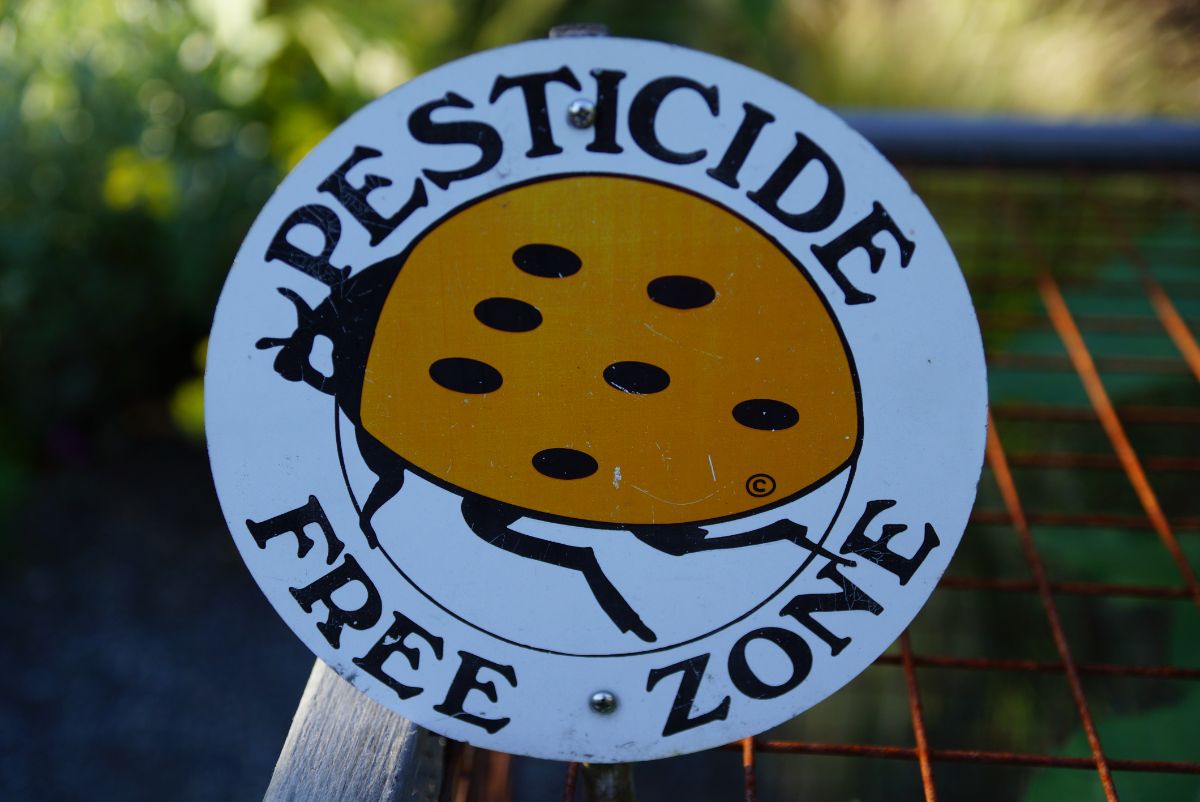
Anytime you have an issue with pests or diseases in the garden, there is a big corporation waiting to make an equally massive profit off your problem. These chemicals are so easy to access, there are tons to choose from, and they work. However, the cost we pay isn't just monetary.
We're drawn to these chemical solutions because they are so easily accessible, and they are "quick" solutions. Unfortunately, many of them also poison our soil, waterways, wildlife, and crops. We need to retrain our minds around the issues of pests, infestations, and diseases. The quick solution isn't always the best, and the long-term effects are equally as important as the short-term performance.
Fertilizers and pesticides leach into the ground, affecting not just this year's crops but subsequent years as well. When we spray pesticides and insecticides, we aren't just harming the problematic pests; these chemicals kill beneficial insects, too, like pollinating bees and butterflies.
The poisons used to kill small garden pests, like mice and voles, end up harming our most majestic birds – owls, hawks, and eagles. If a hawk eats a mouse killed by poison, the hawk will die too. Before using any chemicals, think about the food chain and how the one action may have residual effects on the rest of the ecosystem.
Another big problem with pesticides is that the same pests we are fighting can become immune to the chemicals, meaning we have to spray more and pollute our environment even worse to get rid of them.
Thankfully, there are many other ways to limit or eliminate pests naturally. These methods may take a bit more effort than spraying a chemical on the plants, but it is worth it in the long run.
Check out some of these highly effective, natural pesticide solutions.
2.Start A Compost Pile

Compost piles take material that would typically go into the landfill and turn it into a valuable nutrient-dense material that our gardens love. A compost pile isn't just great for reducing waste; it also rejuvenates worn-out soil. With a compost pile, waste transforms into riches, and we all benefit.
When we garden vegetables and flowers, these plants remove nutrients from the soil to grow. Over time, the soil becomes depleted from too much use, and it doesn't renew very fast on its own, especially because gardening is an intensive removal of nutrients at one time. Compost, also known as “black gold,” is an easy, inexpensive way to build up the soil again so we can continue growing in the same locations.
Compost is a natural fertilizer, and using it reduces our dependence on manufactured chemical fertilizers. There are tons of compost options, from little apartment compost bins to significant 3-berth pile structures for farms. There is no reason not to compost – it's free and reuses waste that you'd otherwise have to pay to get rid of to the landfill.
3.Conserve Water
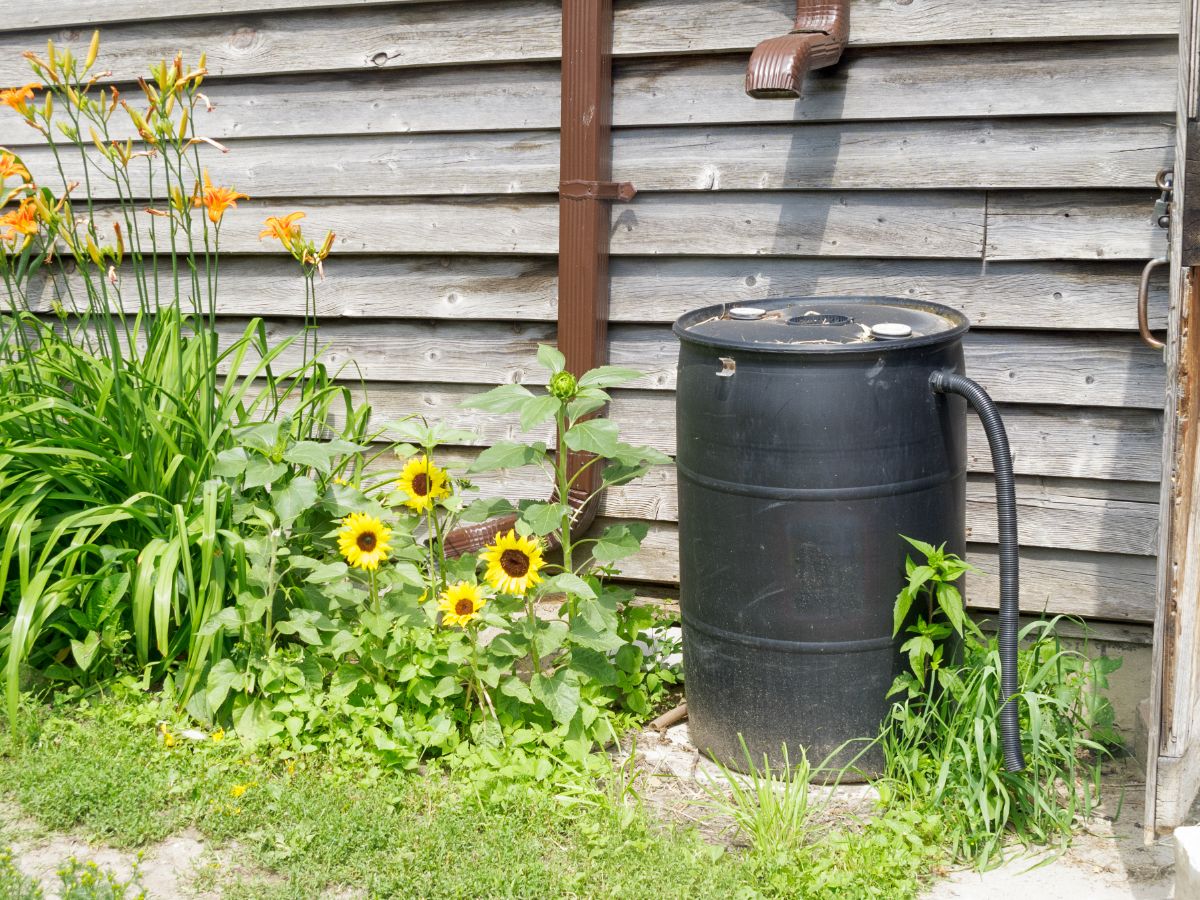
Vegetable and flower gardens use lots of water, and our water supply isn't infinite. If you live in a water-rich area, this may seem like it's not worth the effort. But, those in hot climates or water-poor areas understand the value of water and what even a minor drought will do to the garden.
There are lots of easy ways to conserve water. The simplest method is through rain catchment systems, using barrels to collect free water from the sky when it comes down. It can be stored for later use and doesn't take much effort on your part to install. Rain catchment systems also are great for preventing water from running off the land and becoming waste.
There is some controversy about collecting rainwater in certain areas, so be sure to read up on the codes in your town or state. On the other hand, some states offer incentives for homeowners to harvest rainwater, so that's good to know, too.
A second simple way to reduce water usage is to stop using sprinkler systems – if you've used these types of setups to water the garden before, you know how much is wasted. There is no way for the garden to absorb so much water at one time, so it runs off the side and is essentially wasted. This isn't just a waste of water; it's a colossal waste of money if you pay for your water usage. Look into drip irrigation systems that are infinitely more effective and efficient.
A rain garden is another creative and effective way to collect free water and reduce the impact on your water systems. Rain gardens are a collection of native shrubs, flowers, and perennials planted together in a small depression to hold rainwater as it falls and prevent water runoff.
You may not have considered how much water runs off your land from the roof, driveway, or lawn, but it is usually a pretty significant amount. These impermeable human-made surfaces prevent the ground from adequately absorbing water as Mother Nature intended, and it disrupts the ecosystem. Rain gardens filter contaminants and pollutants from the water source naturally and allow more to soak into the ground.
4.Plant Native
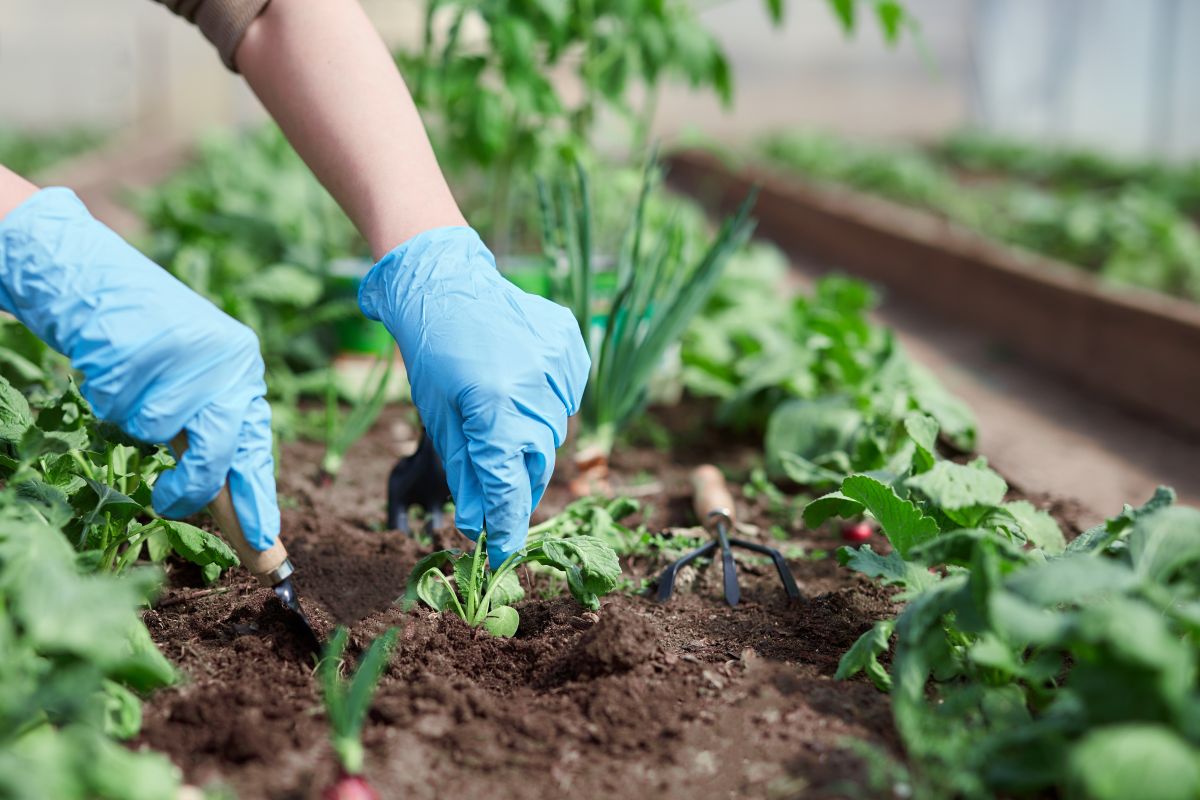
Non-native species usually require more water, effort, and nutrients than native species, meaning they use more resources overall. Planting native species is the best choice for creating a more sustainable landscape. In addition to using fewer resources, native species also attract more native pollinators, providing shelter and food for them. This is a win-win for our vegetable and flower gardens.
Native plants are usually more drought-tolerant, meaning they need less water resources. Plus, so many native species are hardy to your environment without needing any extra help.
5.Stop Tilling

Few practices are more detrimental to the garden than regular tilling of the soil. The no-till methodology is becoming more well-known and embraced, and it can't happen too soon. Tilling literally destroys the earth, in more ways than one.
Tilling destroys the natural soil structure, leading to compacted, dense soil that is difficult to grow in. Microbes that are vital for healthy soil die when exposed to the sun's heat, while earthworms get cut up and suffer from the tiller's blades. Tilling also reduces the soil's ability to retain moisture, causing hard crusts over the garden surface, leading to rain runoff, wasted watering, and erosion.
In addition to killing microbes and earthworms, tilling brings up weed seeds from deep below right up the surface of the garden, where they're more likely to sprout. Tilling means more weeds in the garden – never a good thing!
Sometimes, tilling is necessary, like if you are building a garden from scratch and need to break up the earth. However, it should be reserved for just these few occasions and not done every year.
No-till gardens use mulching, crop rotation, and compost to build up the soil and maintain its vitality. Only the exact areas that will be planted get dug up, usually by hand – the entire garden doesn't need to be plowed to plant. Paths between rows and walkways don't need to be disturbed at all.
If you've got an especially large garden area, tilling or plowing does cut down on the work of planting every year. However, the cost is pretty high when you get reduced crop production due to unhealthy soil and extensive weed issues. If you must till, keep it to just the areas you're physically planting and be aware of the effects. You can compensate for the nutrient loss by adding tons of compost, growing cover crops, and mulching devoutly.
The crazy thing about no-till is that it actually ends up being less work in the long run. At first, it seems like tilling the land makes things easier, but when you add in the extra time needed to fortify the soil and deal with weeds while also dealing with reduced production, it's not a good trade-off.
Even the USDA is getting into the no-till mindset, calling tilling "the equivalent of an earthquake, hurricane, tornado, and forest fire occurring simultaneously to the world of soil organisms."
6.Reuse & Repurpose
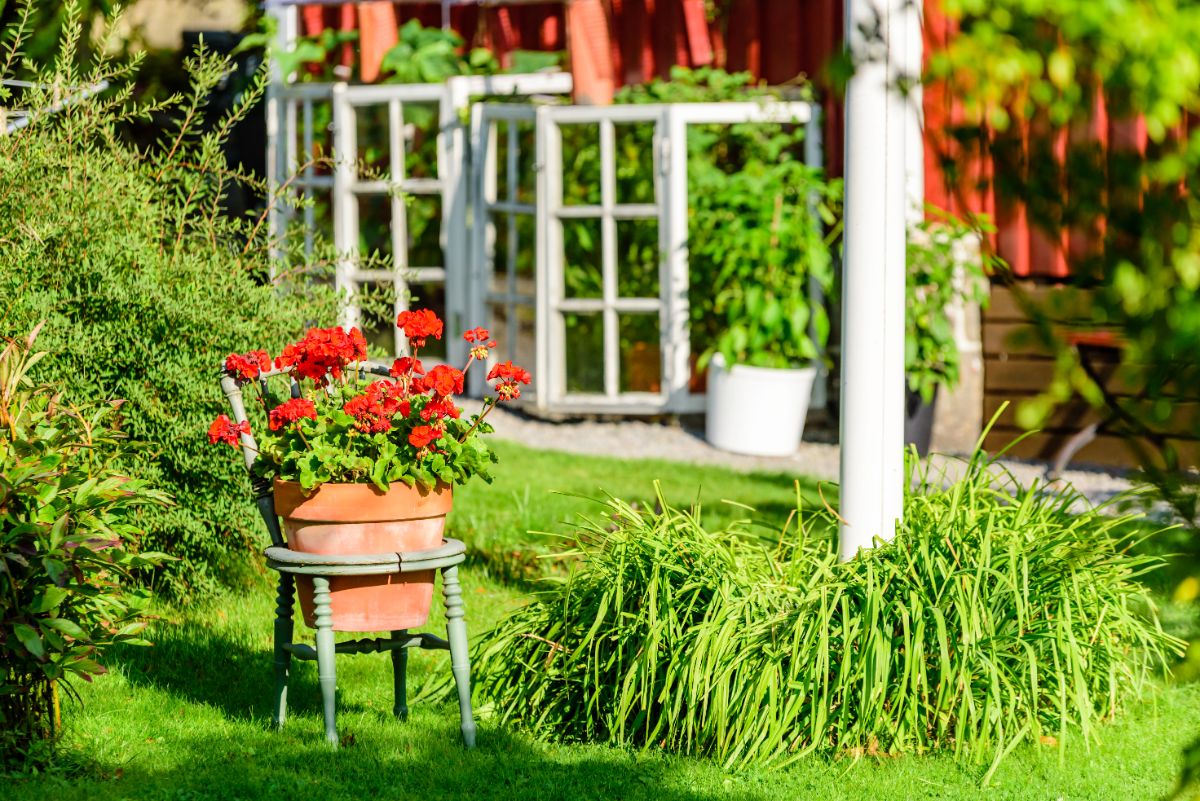
Instead of sending used materials off to the landfill, consider whether they can serve another purpose in the garden. Not everything will be reusable, but the number of things that can be may surprise you. Old lumber makes a nice fence or foundation for a raised bed garden. Cast off broken or imperfect bricks can be used to create walkways, edging around garden beds, or row markers. We've seen some incredible birdbaths and fireplaces built from scrapped bricks.
7.Mulch
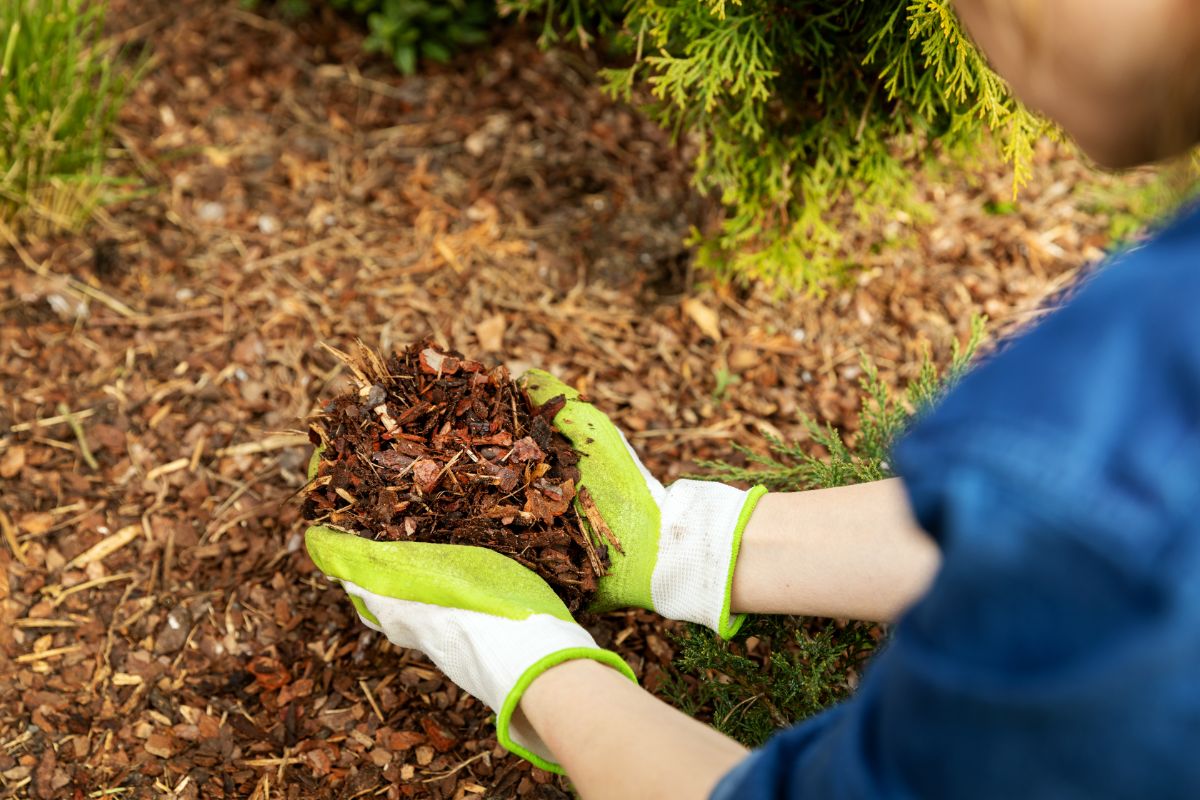
One of the easiest methods to utilize immediately, mulching, is straightforward with huge benefits. Mulch reduces water evaporation, so it assists in conserving water. It also prevents weeds from growing, which is always the gardener's goal and is excellent for reducing the workload.
Vegetables grow much more robust and happier when they have a layer of mulch protecting them from temperature swings. Mulching is also a great way to repurpose waste materials – lawn clippings, old leaves, straw, sawdust, and woodchips all make wonderful mulch. These resources often end up needlessly in the landfill if not reused as mulch.
Another considerable benefit of mulch is that it adds nutrients to the soil as the material breaks down. Mulching can also prevent erosion and works as a vital aspect in rebuilding a landscape.
Sustainable Gardening Practices and Why They're Important

Dirt gets taken for granted; we walk on it, bulldoze it, and plant in it, but rarely do we consider what affects our actions make. The whole earth is made up of dirt, and it seems unending and inexhaustible – can we really use it all up? The issue, though, isn't about using it all up but depleting it of natural nutrients, so it cannot grow anything.
The earth is a living ecosystem with needs and requirements. Soil can die – it has happened before in dramatic ways (The Great Dust Bowl of the 1930s). Rich, fertile soil should not be taken for granted – it needs to be honored and replenished with nutrients regularly to stay viable for growing.
Everything we grow depends on having nutrients in the ground to provide life, from vegetables to shrubs to flowers to trees. We rely on soil for survival, not just because it is the way we grow food, but because trees grown in the earth clean our air, and soil provides a home for many essential insects, animals, and microbes.
A land with poor soil is more harshly affected by drought, natural storms, and weather occurrences and is less able to grow food.
As you can see, none of these sustainable gardening methods are all that complicated. Sure, some may take a bit of effort to set up, but they usually end up saving time and money in the long-term, not to mention the benefit to the environment. The actions of each gardener matter, and we all need to work together to fix and help our land. Even if you implement just one or two practices, it makes a difference. When it comes to providing safe and healthy food for your family, no effort is too little.


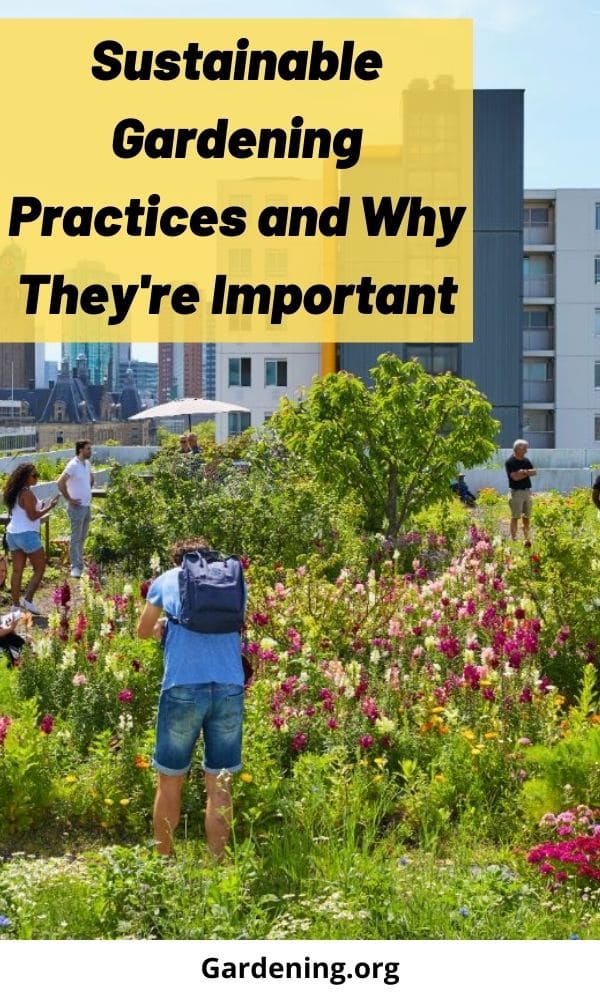
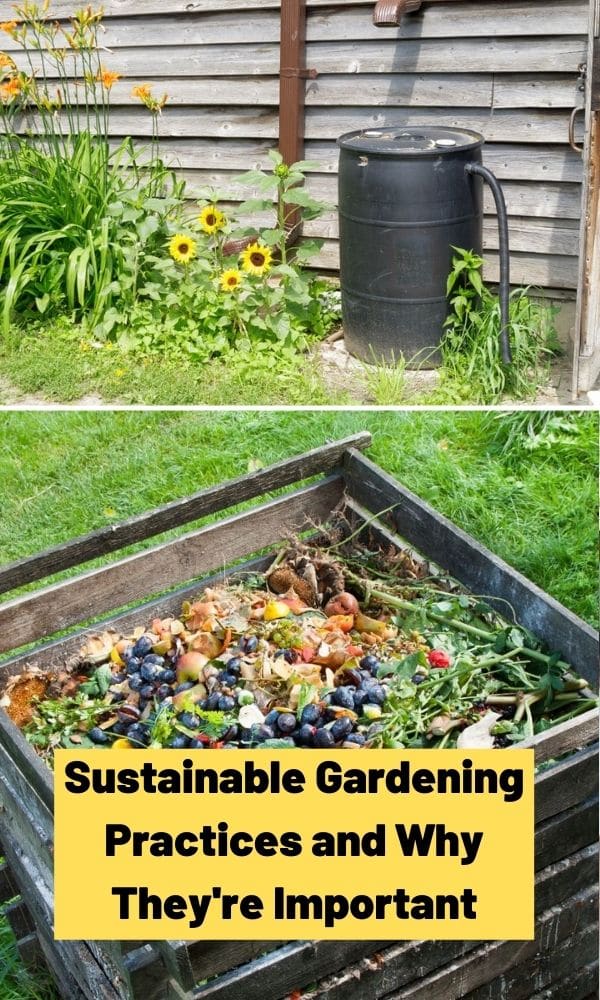
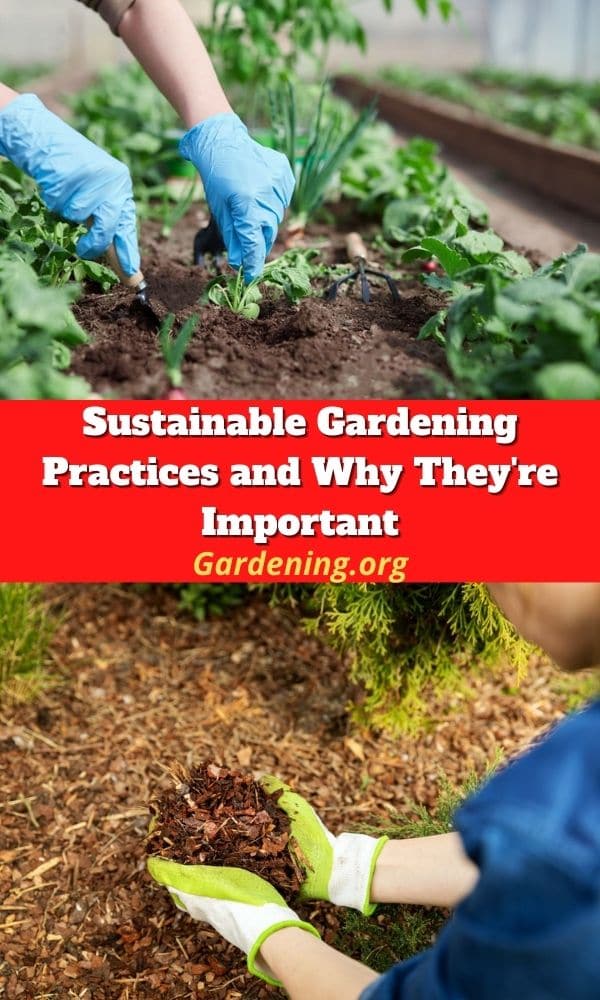
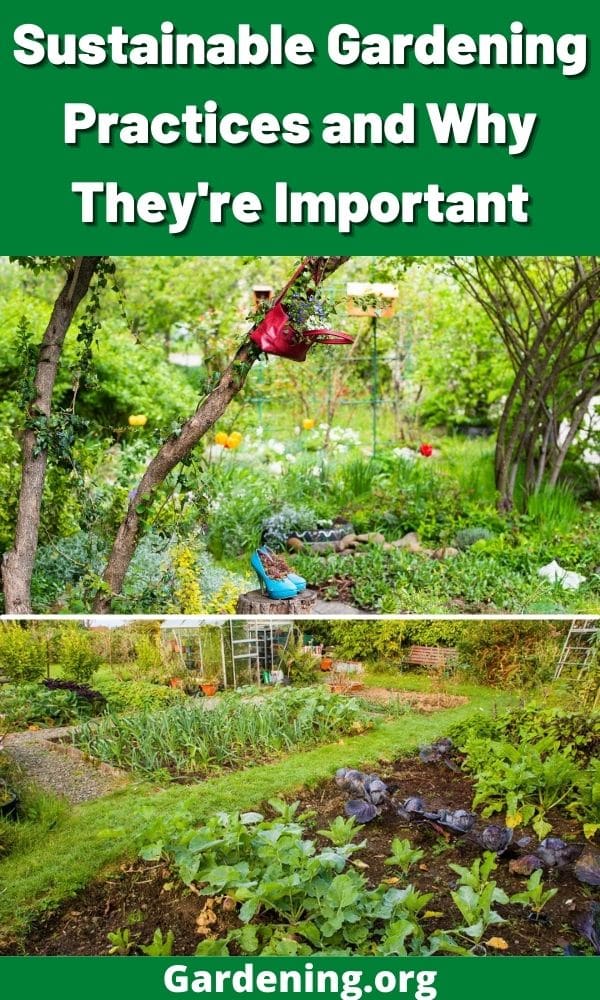
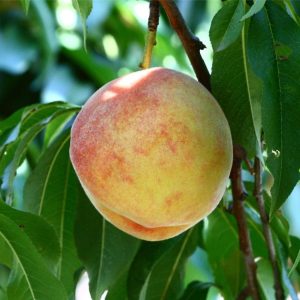
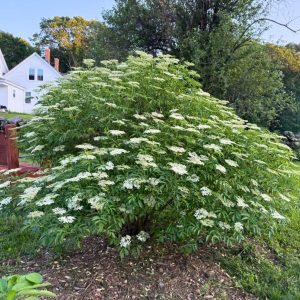
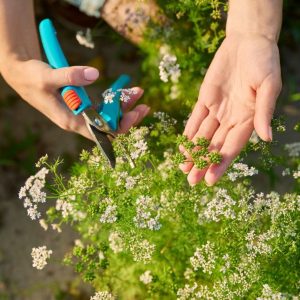
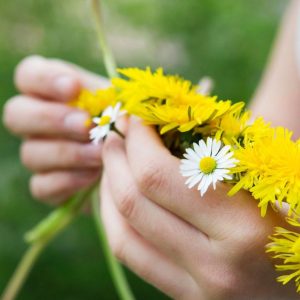
Leave a Reply